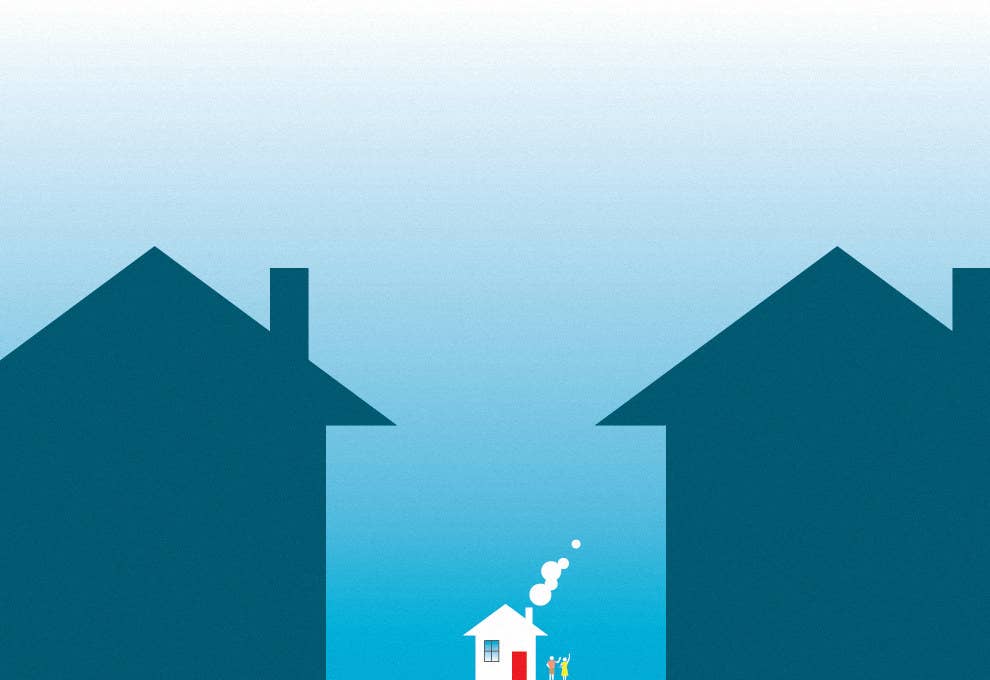
Tiny House Nation is an hourlong (!) show on the FYI network that follows people as they build the tiny houses of their dreams. Do not confuse it with Tiny House, Big Living, HGTV's half-hour version of Tiny House Nation, or the channel’s Tiny House Builders. It's also hard not to confuse it with Tiny House Hunters, HGTV’s show about people looking for already-built tiny houses, or FYI's version, Tiny House Hunting. Or even Tiny House World, which is basically FYI's version of Tiny House Hunting International, or HGTV's Tiny House Luxury, which wants viewers to know that just because you're living in 250 square feet doesn't mean you can't still have the Miele dishwasher of your dreams. And let's not forget about Tiny House Arrest, the HGTV digital series that forces the stars of its other shows to live in tiny houses for 24 hours, or the New Year's Day special Mighty Tiny Houses, which focused on a couple who travel the U.S. in their 125-square-foot home. Soon you’ll even be able to set your DVRs for DIY Network's forthcoming series Love Yurts, starring a couple from Tiny House, Big Living who are building yurts for clients all over Hawaii. If you're interested in being on Love Yurts, you'll only learn from the casting page that "these funky, ready-to-pop domiciles are gaining mainstream appeal and are riding the housing market’s newest wave of living 'green.' Easy to build, easy to portage (if you so desire) and easy on the eyes, you and your yurt could be the envy of all your neighbors!"
Why are there so many shows about tiny houses? Because people can’t get enough of them. According to an HGTV spokesperson, their tiny house programming gets an average of 5 million viewers per week combined.
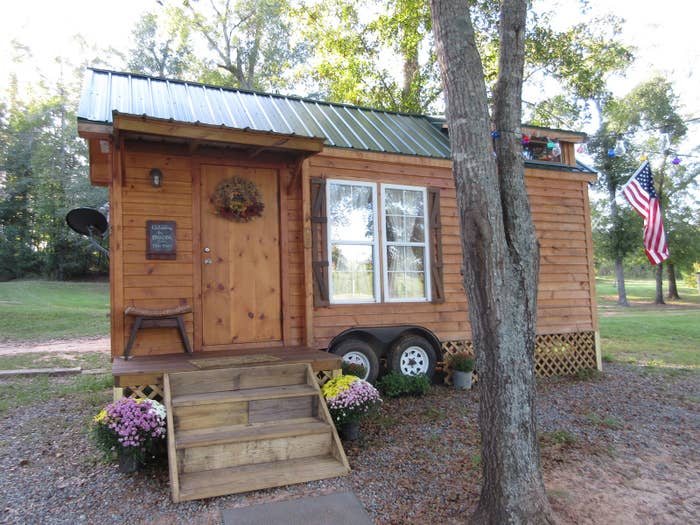
And that's just on television. There have also been, in the last four years, no fewer than four documentaries produced about tiny house building and living, with names like Tiny, Small Is Beautiful, Living Small, and We the Tiny House People. And online, Facebook groups like Tiny House People — 29,000 strong — are filled with discussions about building your dream tiny house; on sites like Tiny House Listings, you can easily purchase a ready-to-go tiny house. (Or if you're not quite ready to make that commitment, just rent one for a night or two, and consult this article if you're worried about how to have sex in it.) The 2015 edition of the National Tiny House Jamboree had over 40,000 people come through over the three days it was held last August; this year's event promises to be even bigger. In February, Steve Harvey went on a rant on the Steve Harvey show about why tiny house owners are "stupid": "Who in hell is going to work every day to buy a damn tiny house? Who puts a tiny house on their vision board? 'I got this little bitty, raggedy baby-doll-looking house, this is my dream home.' You need to get a bigger damn dream, is what you need!" The outcry from the tiny house community was so loud that he backtracked and invited the hosts of Tiny House Nation on his show as an olive branch.
You could say that tiny houses are having a tiny bit of a moment. For the people portrayed onscreen buying or building tiny houses, a few common themes emerge, most of which are connected to not having to spend as much time and money on paying for and maintaining a large house. They want to rid themselves of unnecessary possessions; to not feel beholden to maintaining a too-large house, particularly cleaning it; they want to be out of debt; they want to live more "green"; they want to own a home but don’t want to pay a mortgage; they want to be able to pursue hobbies and travel as they see fit; they want to spend more time with each other or with family (which they say they are able to do because they now have more time, and because they are forced into a small space together); they often want to live off the grid, or at least in a remote area. They want to live, in essence, a simpler, more pared-down life — and the rest of us want to watch them do it.
They want to live, in essence, a simpler, more pared-down life — and the rest of us want to watch them do it.
"I don't hold onto things — I'm not a sentimental person — so it was really easy for me to get rid of everything, and I didn't have that much to begin with," said Crystal Harvey on the phone from her tiny house in Tennessee. Crystal and her husband, Chaz, chronicled their move into a tiny house on an episode of Tiny House Nation that aired in June. They decided to "go tiny" when they realized that they'd moved 11 times in five years because of Chaz's job and wanted a living situation that would be more amenable to their lifestyle. "We thought, well, we could own this house, not have to ever pay rent again, and when we get bored of a place or [my husband] transfers, we just take the house with us."
John Feld, senior vice president of programming for the HGTV, DIY, and Great American Country networks, said the people featured on his networks' tiny house shows tend to fall into three camps: downsizing people, adventurers, and young adults moving into a tiny home on their parents' property.
But with almost all of them, the desire to live debt-free is something that comes up again and again — and the number one villain is Wall Street. "A lot of people get into these mortgages and get these loans they can't afford," said Crystal. "They're paying rent to a bank for something they're never going to pay off."
Tiny houses may be cheaper than "regular" houses, but they're not free — they tend to range from $25,000 for something bare-bones to $75,000 or more for a more well-appointed one, and those prices don't include land. And because they're not traditional homes, it's more difficult to get a mortgage for them, meaning most people who buy or build tiny homes pay cash or self-finance — an option that's not available to everyone.
If part of the American Dream includes owning your own home, then perhaps these tiny homesteaders are simply carving out their own space in an unforgiving real estate landscape. But as with anything real-estate-related in this country, even tiny houses come with their own set of privilege and class assumptions that end up dictating who gets to live in them and where they get to put them — and often shut out those who could benefit the most from the tiny house movement.
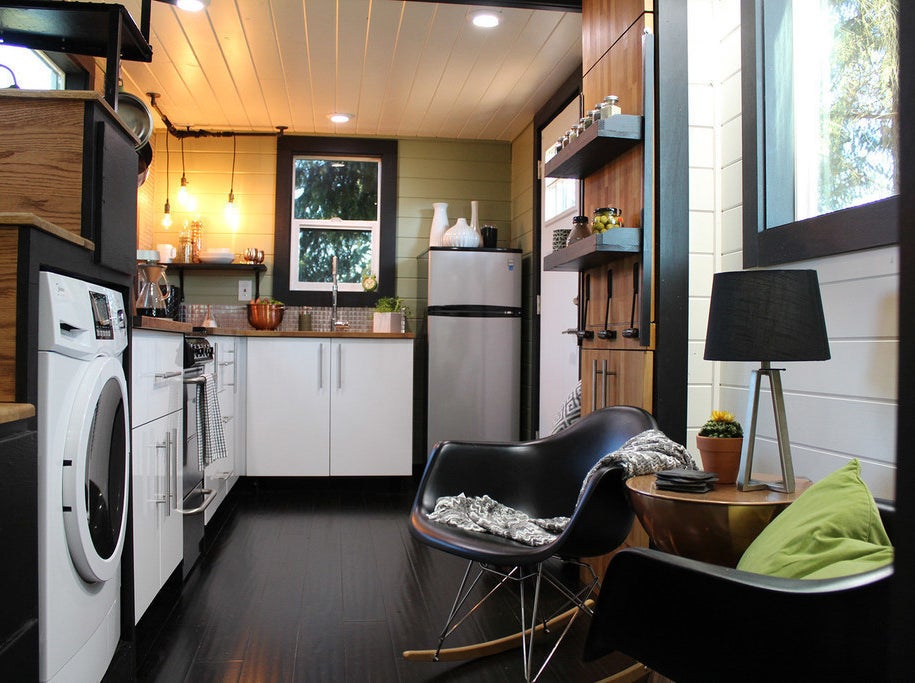
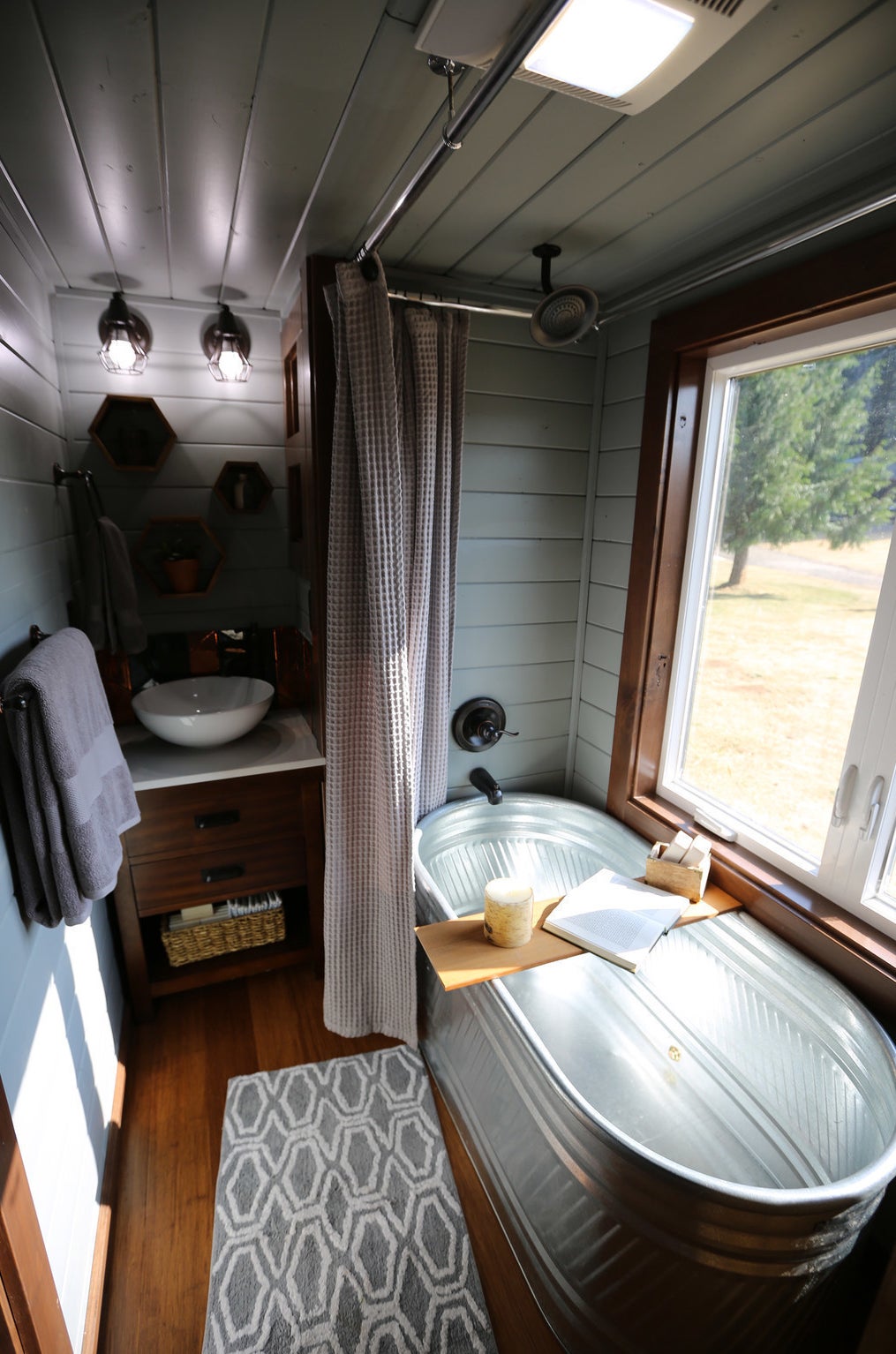
Within the first two minutes of the 2015 documentary Tiny, which follows the journey of Christopher, a twentysomething man in Colorado building his first tiny house, he says: "Thoreau has always been a hero of mine. But I'm not sure what he would think about building a cabin on a trailer. Perhaps he felt like a foundation was necessary to commit to a place. To feel connected to the landscape that he already loved." Then the film cuts to Patty Limerick, director of the University of Colorado at Boulder's Center of the American West, who says, "Henry David Thoreau — went to the woods so I could live deliberately and have that sense of connectedness. That is a huge contribution to our existence as humans on the Earth."
Indeed, if there was ever a patron saint of tiny houses, it would be Thoreau, whose words from Walden — “I went to the woods because I wished to live deliberately" — are often invoked in discussions of tiny houses. The implication is crystal clear: The only way to live a truly authentic, meaningful life is to live in isolation in nature, with minimal possessions and, it seems, minimal interaction with other humans.
Indeed, if there was ever a patron saint of tiny houses, it would be Henry David Thoreau.
But, as The New Yorker's Kathryn Schulz has written, Thoreau has himself long been misunderstood, and his writing, particularly in Walden, misinterpreted. That book, Schulz argues, is "less a cornerstone work of environmental literature than the original cabin porn: a fantasy about rustic life divorced from the reality of living in the woods, and, especially, a fantasy about escaping the entanglements and responsibilities of living among other people."
"Going tiny” implies that the person who is moving into a tiny house is doing so to escape their previous life of excess: They are coming from one place and going to another. This has made it, by definition, a middle-class movement, one that eschews identification with people who have lived in "tiny" homes for decades — whether that "tiny" home is a mobile home, an RV, or just a really small apartment. And so the tiny house movement has an inherent privilege built in: Going tiny is a choice. If you’re coming from a more abundant place, in which you could live in a 2,000-square-foot house but you choose to live in 200 square feet, then you can be part of the community. If not, well, you're just poor.
When it comes to homes, bigger has almost always meant better. The size of newly constructed homes in the U.S. hit a peak of 2,521 square feet in 2007, right before the real estate bubble burst — that's nearly 1,000 square feet larger than an average new home was in 1973. And thus, there's something performative about the act of going tiny that brings to mind the critique of consumerist mindfulness. It’s not enough to just "go tiny"; you also have to appear on TV, start a blog, and proselytize about your new lifestyle. Because while people have been living in small homes forever, it's just that now, as (overwhelmingly) white and middle-class people are doing it, there’s finally something to celebrate. It's not new for people to be living in RVs or mobile homes; it's just that now there's a new vocabulary to gentrify living in a small space.
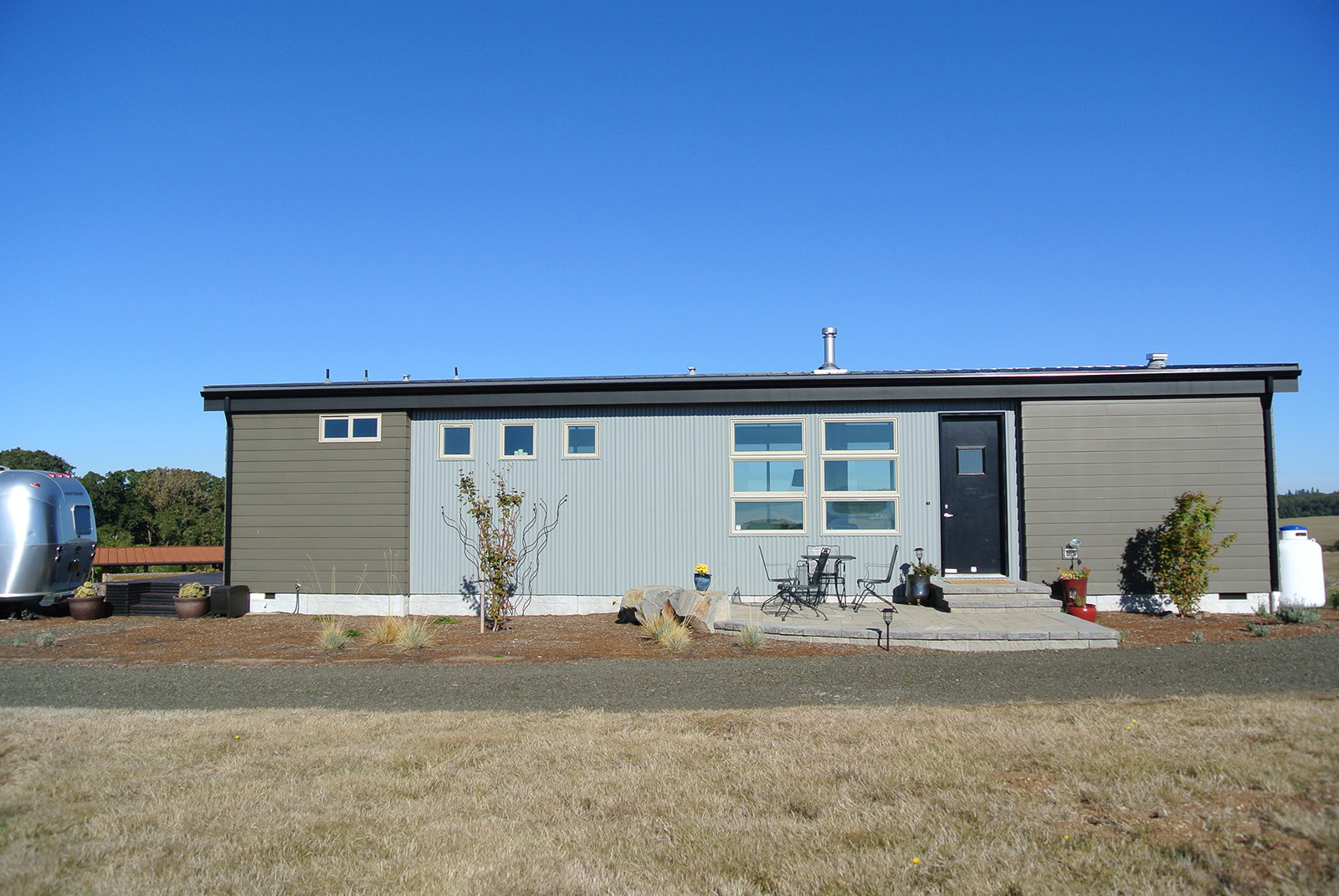
And while building a tiny house may not be as expensive as building a full-size house, its nebulous legality still requires time and money to navigate the thicket of codes and regulations pertaining to tiny houses — and to be comfortable with living off the radar of local code enforcement authorities. There aren't reliable statistics about how many tiny houses there are in the U.S., or how many people live in them full-time, in part because many of them are under the radar — the legality of living full-time in a tiny house on wheels is murky (it's considered an RV), and many municipalities have laws that dictate that freestanding houses on a foundation must be a certain size. Since tiny houses are usually under 400 square feet, they often fall afoul of the law. In most places, regulations haven't yet caught up with the tiny house trend. In California, the Department of Housing and Community Development (HCD) issued an information bulletin in February (updated in May) discussing the legality and construction of tiny homes. The agency, which only has jurisdiction over tiny homes on foundations (not anything on a trailer), put out the information bulletin "as a result of a flood of calls we got regarding tiny homes," said Mitchel Baker, a district representative for the department.
Finding a place to put your tiny house is often an afterthought — but it can be the most difficult part of the process.
Still, the HCD has no idea how many tiny homes exist in California. "Many of these are likely unknown to the local enforcement agencies," said Kyle Krause, who manages California's State Housing Law program. Finding a place to put your tiny house is often an afterthought — but it can be the most difficult part of the process, in part because of the inherent privilege of who gets to bend the rules and who feels comfortable skirting the law — or pushing for it to be changed, as it has in Fresno, California, and Nantucket, to name a couple of recent examples of municipalities that have passed tiny house ordinances allowing them to be parked there.
As another tiny house owner in Tennessee told me, "We're so rural in where we live — it's about an hour just to get to a major town — that it just ended up that they have regulations and codes, but they don't really have anyone to go out and enforce them, so it's benefited us that no one's out here looking to enforce any local regulations. There's actually several tiny houses up here in the mountains where we reside." She and her partner talked to several real estate agents before settling on their 15-acre homestead. That’s a freedom that may not be available to people, like the homeless, who could benefit from the construction of tiny houses.
Efforts to use tiny houses to alleviate the housing crisis in some major cities have run into roadblocks. In Los Angeles, city officials seized tiny houses that had been built to house homeless people; the man who built them had wanted to construct a tiny house village in L.A. for homeless people, an idea that the mayor nixed. In Denver, a tiny house village for the homeless that was under construction was destroyed by police this past October. And while parts of the Pacific Northwest are using tiny houses to help alleviate homelessness, to some degree of success, these efforts have not yet proven replicable on a large scale — perhaps in part because there has yet to be a national, coordinated effort to propose tiny houses as a viable solution for homelessness. It's a solution that doesn't have the stakeholders it needs to move forward. According to HCD Deputy Director of Communications Evan Gerberding, "It's certainly a subject that we've been interested in — there's definitely a need in California. A lot of inventive and creative options I think should be considered."



L-R: Tiny House Big Living, Tiny House Hunters, Tiny Luxury
On tiny house shows, the vast majority of people featured are white — young white couples, young white single people, older white single people. And according to Jewel Pearson, a 47-year-old black woman who lives in a tiny house in North Carolina, that's indicative of the tiny house community overall.
"It is a very whitewashed movement," said Pearson, whose tiny house build was the subject of a September episode of HGTV’s Tiny House, Big Living. Along with two other women, Pearson started a website and Facebook group called Tiny House Trailblazers for people of color who were interested in tiny living. "I started a public Facebook page because I felt like, I don't see anybody out here who looks like me." Pearson said that as she was gathering information about her own build, which started in January 2015, she encountered resistance from suppliers and builders, one of whom went so far as to tell her that "if I had a white face representing my project, I'd probably get more response."

For middle-class white people, who by and large have not had to deal with the burden of historical housing discrimination, the decision to go tiny is less fraught than it is for black people. As Pearson pointed out, "as a black person now who is making it — and part of you 'making it' is you want to show off your house and your car — the last thing you want to hear about is a tiny house," a sentiment that was echoed by Steve Harvey, and which many in the tiny house community took umbrage with. When friends and family heard Pearson was moving into a tiny house, she said many of them asked if she was in financial trouble.
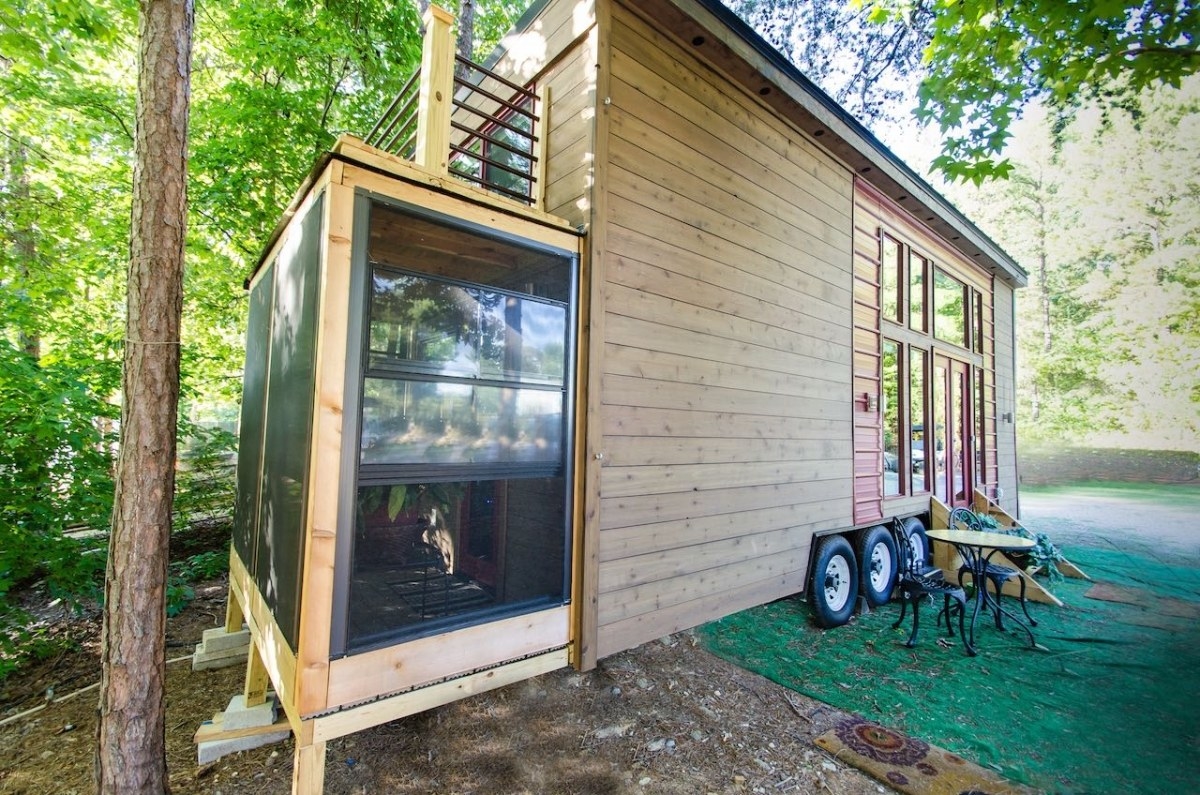
Bonnielee Cuevas, 34, who runs Tiny House Trailblazers with Pearson, said that most of her black and Latino family was supportive when she told them that she, her partner, and her 13-year-old son were going tiny, but she had an aunt and uncle who "couldn't put it together, especially since I had been working so long as a journalist. They couldn't understand why I would want to move to the mountains and separate myself from the big city." (They've since come around after visiting, she said.)
And while there's a sense of freedom for white middle-class people being able to drop off the grid or just "go tiny" wherever they'd like, for people of color it's much more complicated. Even if they wanted to live in a city, many cities are not hospitable to tiny houses, and so whether they want to or not, they're forced into more rural areas. "The rural areas aren't necessarily friendly to people of color," said Pearson. "Where a white person doesn't have to think about all that, there's a different safety issue that I have to be mindful of."
Nevertheless, Pearson and Cuevas hope that their experiences can serve as examples for people who might see the process as daunting. "We want to inspire and motivate people of color to go tiny," Cuevas said.
As for the Harveys, the Tennessee couple featured on Tiny House Nation, going tiny has been a positive experience. And yet their tiny house is currently on the market for $48,000. Chaz has been working in Knoxville, over an hour's drive from where they've parked, and Crystal is thinking about going back to school. Besides, they've gotten a second dog since filming their episode of Tiny House Nation, and things are getting tight. But once things have settled down, they plan on buying a plot of land and building another house — out of a shipping container. Which is perfectly on trend, said HGTV's Feld: "There are people out there that love this idea of turning and transforming these everyday items — silos, buses, small shipping containers — into tiny spaces," he said. And yes, there is, of course, already a show in development.

